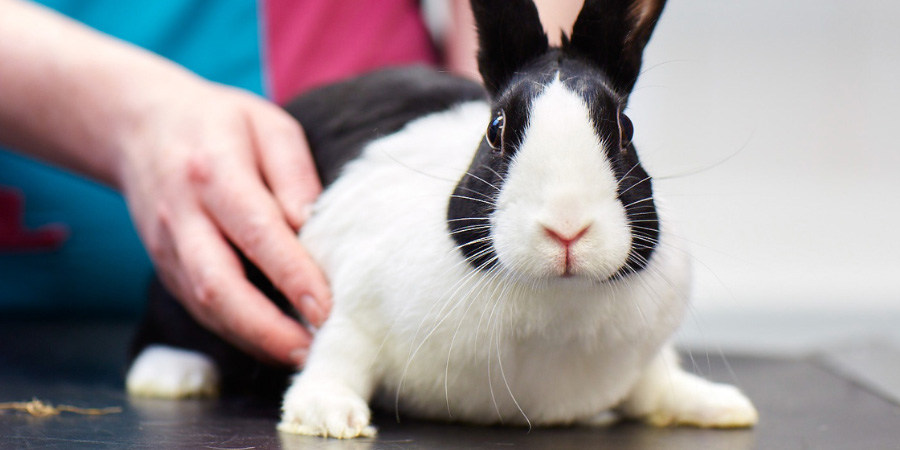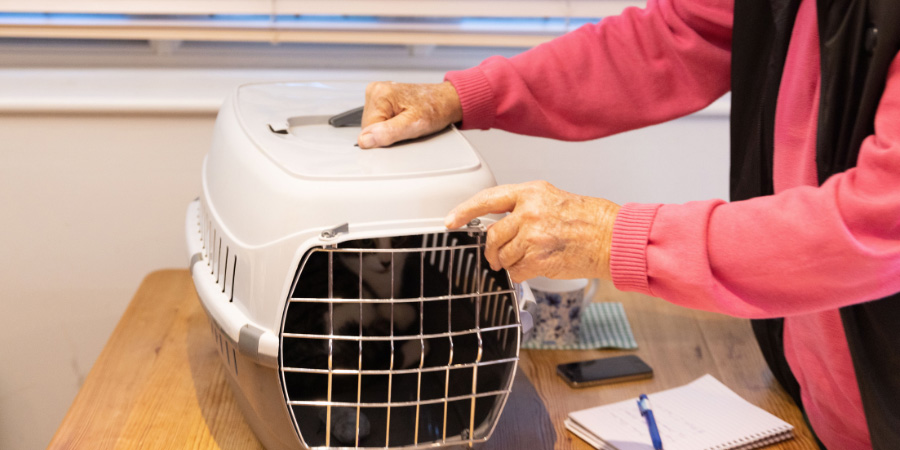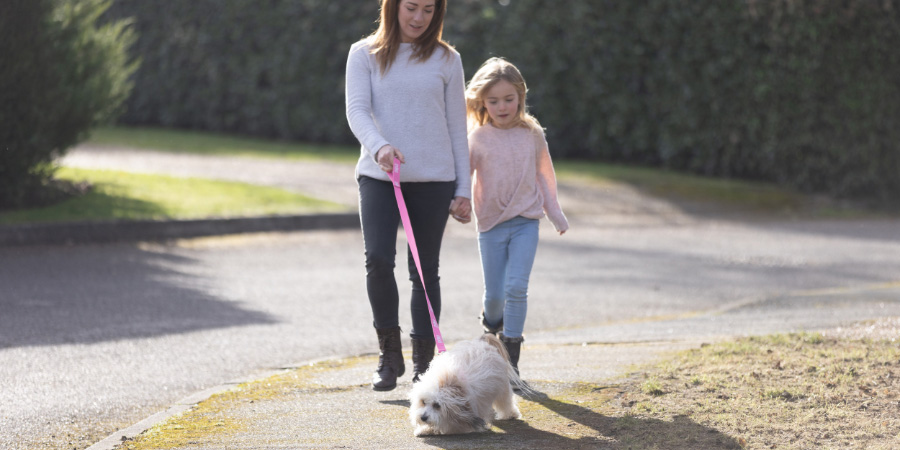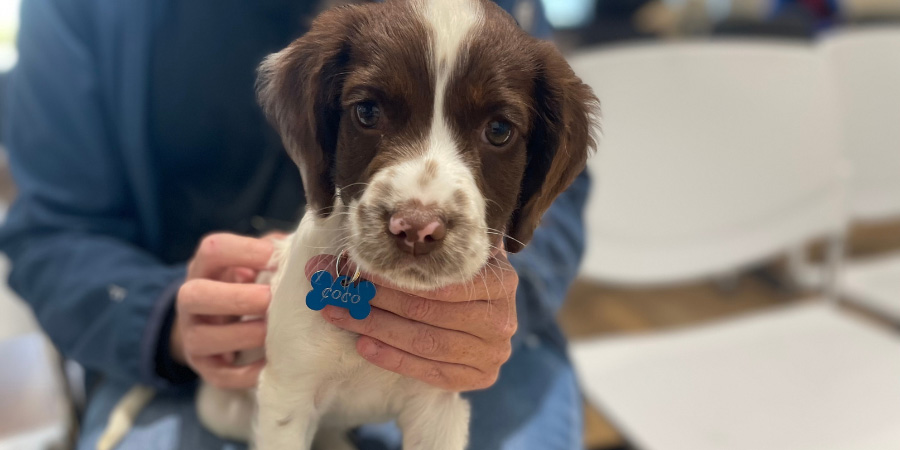Going to the vets is essential in keeping your pet healthy. That’s why it’s so important to schedule and attend regular appointments.
Sadly, for some pets, going to the vet is a scary experience. And the last thing you and your pet need is added stress when they’re sick or injured. But, with a little preparation and some helpful tools, your pet can learn that going to the vet isn’t that bad after all.
In an emergency, the most important thing is to get your pet to the vets as safely and quickly as possible, so preparation is less of a priority here.
Read our tips to help reduce your pet’s anxiety and help them cope with visiting the vet for routine check-ups.
Before the appointment
To ensure that your pet remains healthy, you need to take them to the vet for routine appointments, such as their annual vaccinations. That’s why we recommend fully preparing your furry friend before you take them to visit the vet.
Preparing your pet for the vet will help make them a lot calmer and less stressed. But, you should never delay in taking your pet to the vet if they are unwell. These are helpful tips to help you prepare for routine visits.
For all nervous pets

Regardless of which pet you have, it’s likely the vet will need to examine them once they get into the consultation room. Before your appointment, try and get your pet used to this at home.
Depending on their size, you could try lifting and placing them on the table to softly examine them. Look over parts of their body such as their paws, legs, eyes, and ears. Reward them with treats and praise to make this a positive experience, and repeat this throughout their lives so they remain confident and comfortable with being checked over. If your pet seems worried or uncomfortable with you examining them, stop and try again another time.
When travelling to the vet, ensure your pet is safe and secure in the car or however you are transporting them. And try to encourage them to use the toilet beforehand to prevent any accidents. If your pet suffers from travel sickness, avoid feeding them a large meal prior to travel.
It’s worth asking your vet if there is a quieter time of the day for appointments. There may be a bit of a lull in the afternoon at certain practices – so it’s worth checking in with your vet. If you do have a nervous pet, consider making routine appointments at the start of the consulting session as you are less likely to have a full waiting room. Your pet may be calmer in a waiting room with less pets.
For nervous cats

If you have a cat, get them used to the cat carrier ahead of the visit by:
- Leaving it out (all of the time if possible, but at least a few weeks before) so they can sniff and explore on their own terms.
- Place their favourite treat, toy or blanket inside.
Your cat will be much happier to go in the carrier and settle down if they can smell their own stuff in there. Some cats will even use it as a bed or hiding spot if it’s left out all the time!
Of course, every cat is different so this might not work. If they’re not keen on their carrier and want to run for the hills, try:
- Wiping the inside of the carrier with a pet calming wipe
- Using a spray in the carrier at least 30 minutes before your cat goes in to help keep them calm.
But, only use vet-approved calming sprays or wipes to make sure that there are no chemicals that can harm your cat. We recommend consulting your vet before using anything.
For nervous dogs

While exercising will not prevent anxiety in dogs, it could help them feel more relaxed if they’ve had a nice long walk or an active play session beforehand. However, it’s worth noting that some dogs can become too excited and may become more anxious as a result. Sadly, there’s not a one solution fits all – so tailor this advice to your individual dog.
To prepare your four-legged friend for the appointment, we recommend:
- Leaving yourself enough time before the appointment, so that your dog can take a bit of time coming in and you’re not forcing them into the building.
- Making regular visits to the vet when you don’t have an appointment, so they get used to it. Check if your vet practice offers ‘socialisation’ appointments or just pop in to get them weighed on the scales.
- Contacting your vet practice and see if they would mind if you brought in your dog to visit so they can experience the waiting room at a quiet time.
- Rewarding your dog with treats at every step of the way so they’ll think of the vets as a positive experience rather than a scary one.
When travelling to the vet, you should:
- Use a familiar blanket in the car for your dog as well as bringing some of their favourite toys.
- Use a calming spray about 30 minutes before the journey if you have quite a nervous dog.
We recommend consulting your vet before using anything to make sure that it’s suitable for your pup.
In the waiting room

For dogs
When bringing your dog to the vet, keep them on a short but loose lead. Encourage them to sit and focus on you – consider bringing them their own blanket to sit on. You could even teach them a settle command with the blanket so they will associate the command with the blanket. This may help in getting your furry friend to sit or settle in the waiting room.
Be sure to watch their body language as well, let them hide if they want to and try to keep them away from other dogs.
Unless your dog has a reason not to accept treats, such as you’ve been asked not to feed them, bring some with you and reward them for good behaviour. It’s not a bad idea to carry treats with you, regardless of whether you have a cat, dog or rabbits, so that you can have treats to create positive associations.
For all pets
The waiting room can be a daunting place for your pet with all the loud noises, strong smells, and other animals. At some of our Pet Hospitals, there are separate waiting areas for cats and dogs to make it a less stressful experience for them. Check with your local vets to see if there are separate sections for your pet or even separate appointment times just for cats or rabbits.
If possible, try to sit in a quieter spot away from the door. If you have a cat or a small animal in a pet carrier, hold your carrier securely on your knee. Some practices have elevated shelving to put carriers on. The most important thing is to keep them off the floor and away from curious dogs sniffing.
Keep them in their carrier and cover all four sides and the top with a blanket or towel to help make it a calmer environment. Make sure they can’t see any other pets in the waiting room by turning them to face you.
If your pet is really struggling in the waiting room or has had a bad experience in the past, consider waiting with them in the car until your appointment time. But, only if the weather is cool as cars can heat up to dangerous temperatures. If the weather is cool enough, wait in the car with your pet and call in to reception on arrival to check in and advise them of the situation.
In the consultation room
When you do get into the consultation room, keep your cat or rabbit in the carrier. This way, you can explain to your vet why you are visiting. Prepare a list of concerns or questions beforehand and write them down so you don’t forget them.
Do not tip or force your pet out of the carrier. Instead, open the door and let them wander out themselves.
With your dog, keep them on a lead and encourage them into the consulting room – potentially with treats if they are allowed to eat them. Do not pull them into the room as this may stress them out.
Whilst it may be difficult, try to stay calm and relax. Pets can sense our feelings – so reassure them that there is nothing to be worried about. If there is anything you are worried about, just contact your vet and they’ll do their best to help you.
